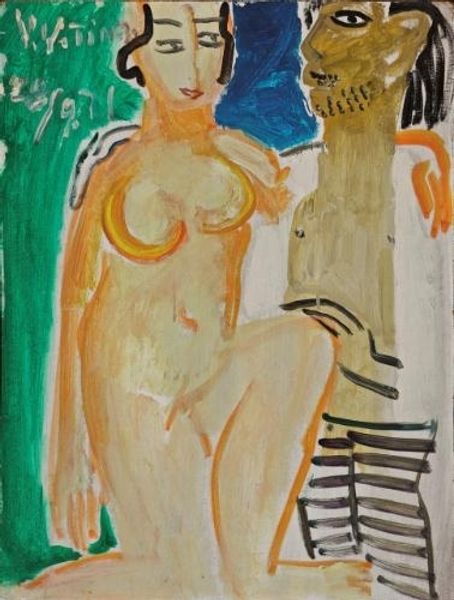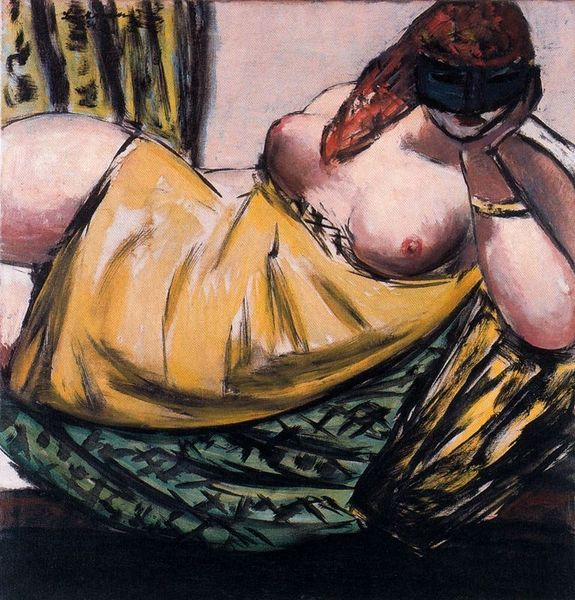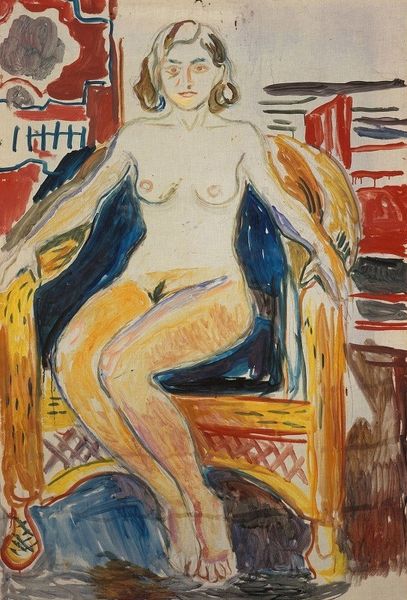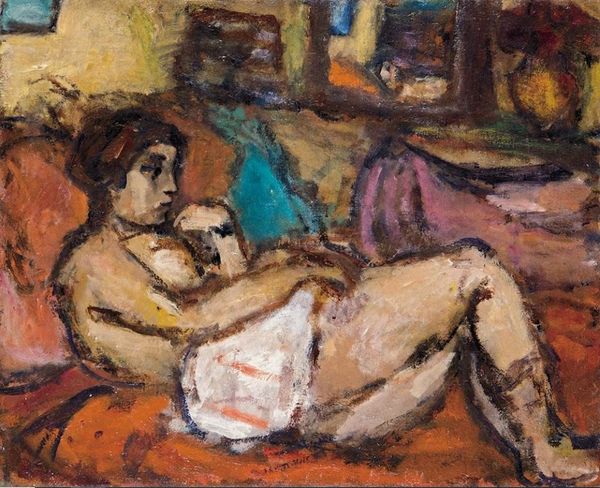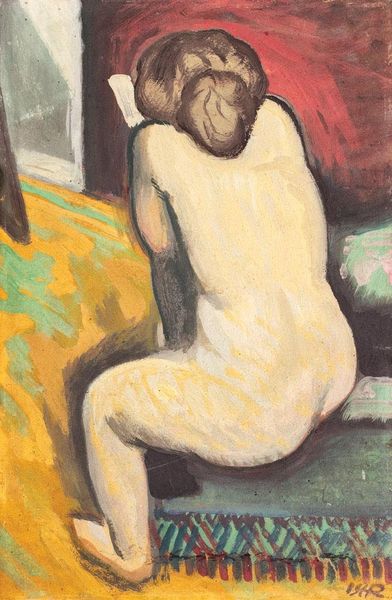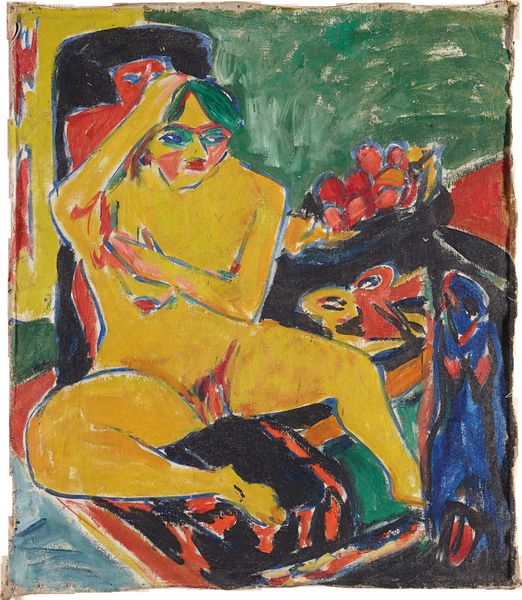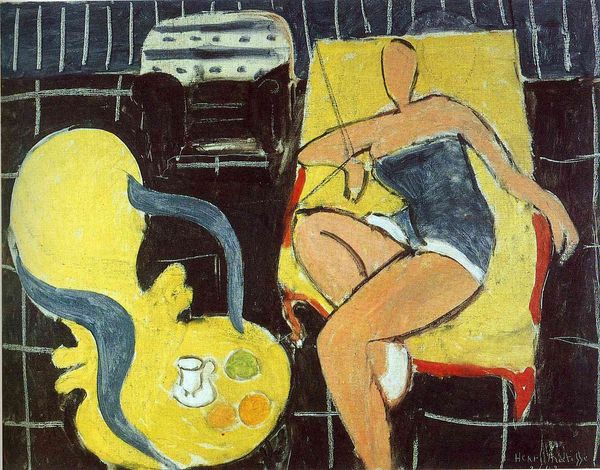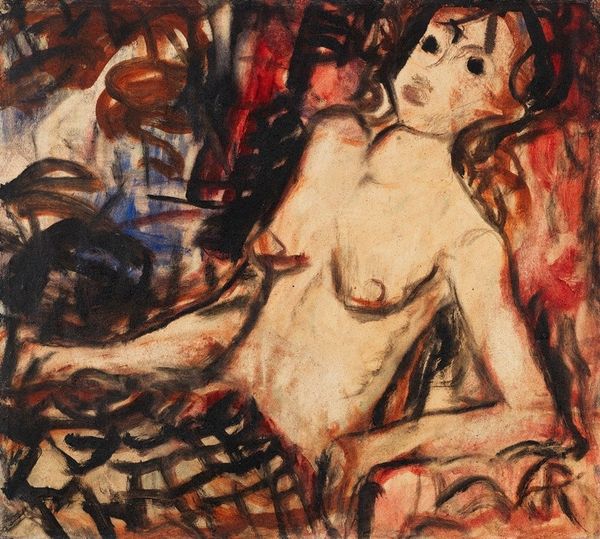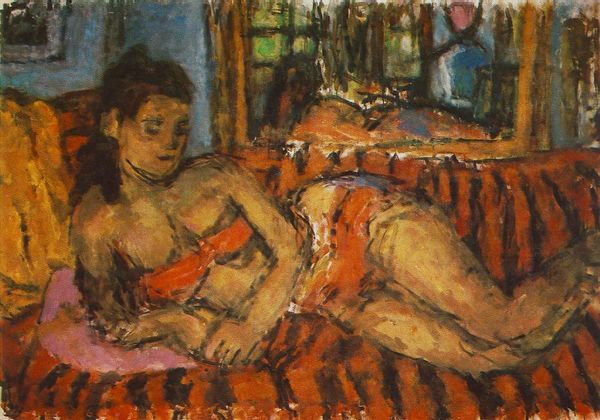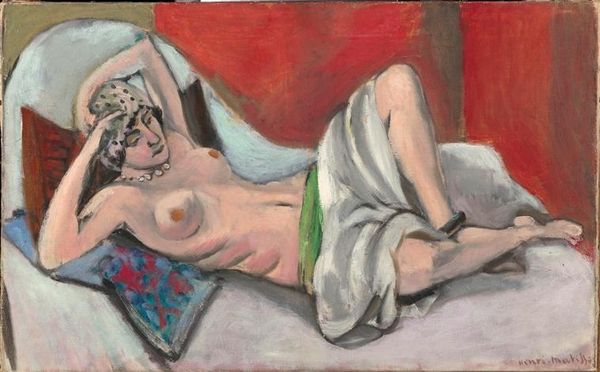
Copyright: Henri Matisse,Fair Use
Editor: Henri Matisse's "Danseuse Assise," created in 1942, immediately strikes me with its intimate, almost dreamlike quality. The colors are warm, yet the linework is bold, creating a captivating tension. What do you see in this piece, beyond the obvious depiction of a seated dancer? Curator: The "Danseuse Assise," beyond its vibrant Fauvist style, acts as a coded image, especially poignant considering its creation during World War II. Note how the dancer is positioned, almost as if self-contained, or pulling away from the darker background elements in the top left of the piece. The dance, the life, is focused inwards. Does this perhaps reflect a collective experience of a world on hold? Editor: That's fascinating. The darkness in the background seems almost like a looming threat now that you mention it. So, the dancer’s internal focus, is that defiance, or resilience? Curator: It is both! Consider how dance has always been associated with life, ritual, and community. In Matisse's dancer, we see a refusal of the oppressive darkness through an assertion of the inner life, maintained as memory even during trauma. Think of dance as a potent symbol. Editor: So, the symbolism becomes almost a personal form of resistance for both Matisse and, perhaps, the viewer? Curator: Exactly! The seemingly simple depiction of a seated dancer holds within it layers of cultural memory, psychological fortitude, and enduring human spirit against seemingly impossible odds. How does this reframing influence your experience? Editor: It adds so much depth. Now I see the painting not just as a portrait but as a statement about persevering even when the world feels like it's falling apart. Curator: Indeed, Matisse, through symbolic visual language, speaks of resilience, endurance, and continuity of self against forces intending otherwise. A truly profound image, wouldn't you agree?
Comments
No comments
Be the first to comment and join the conversation on the ultimate creative platform.
